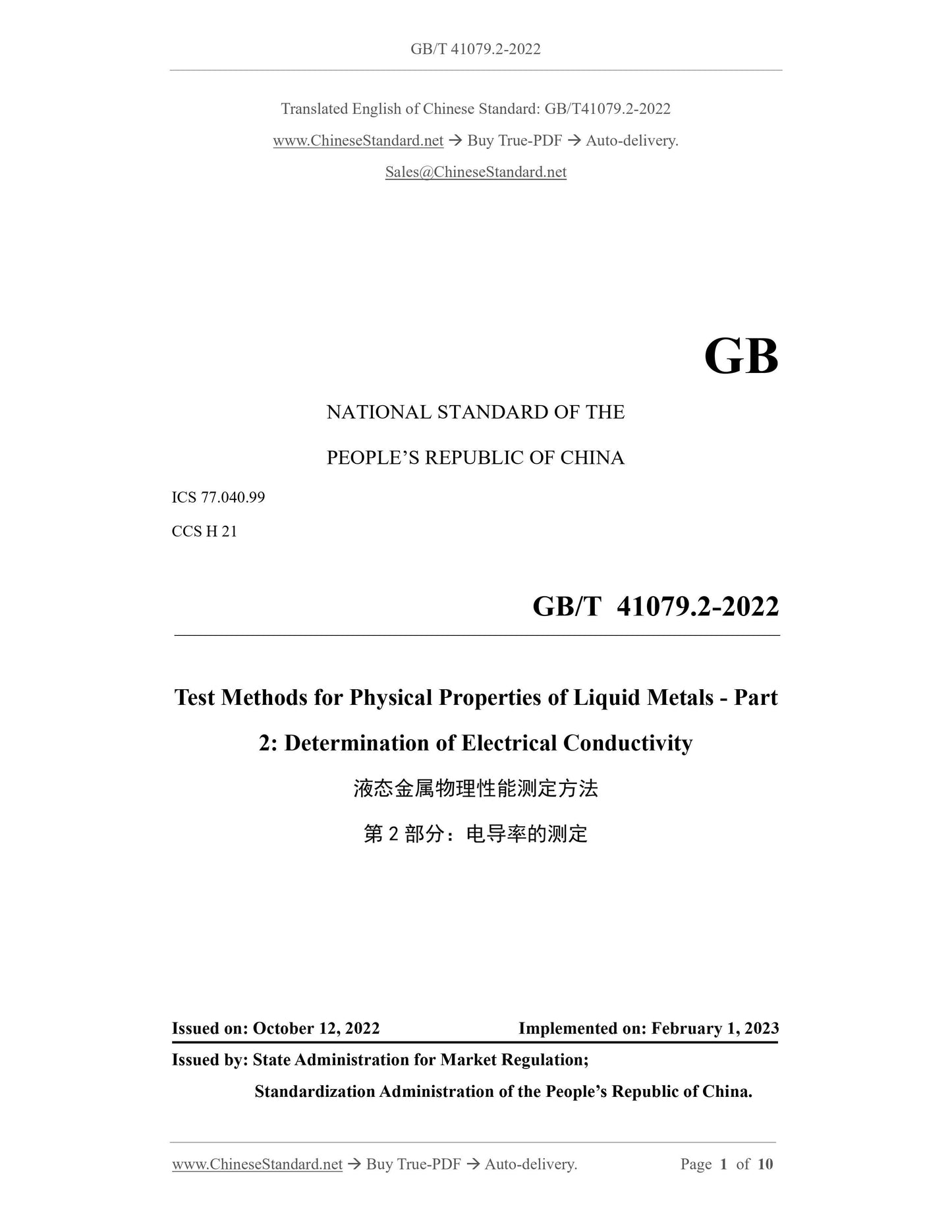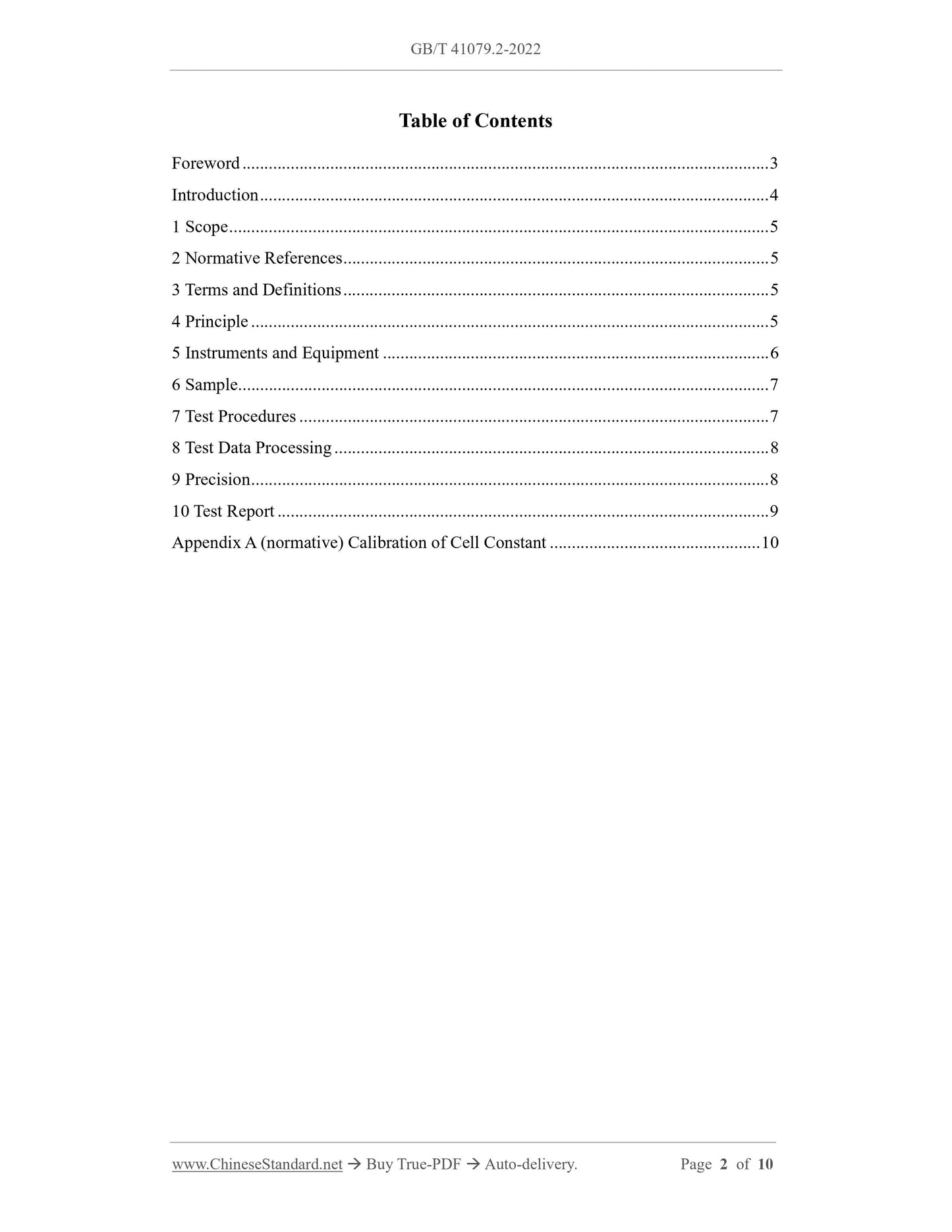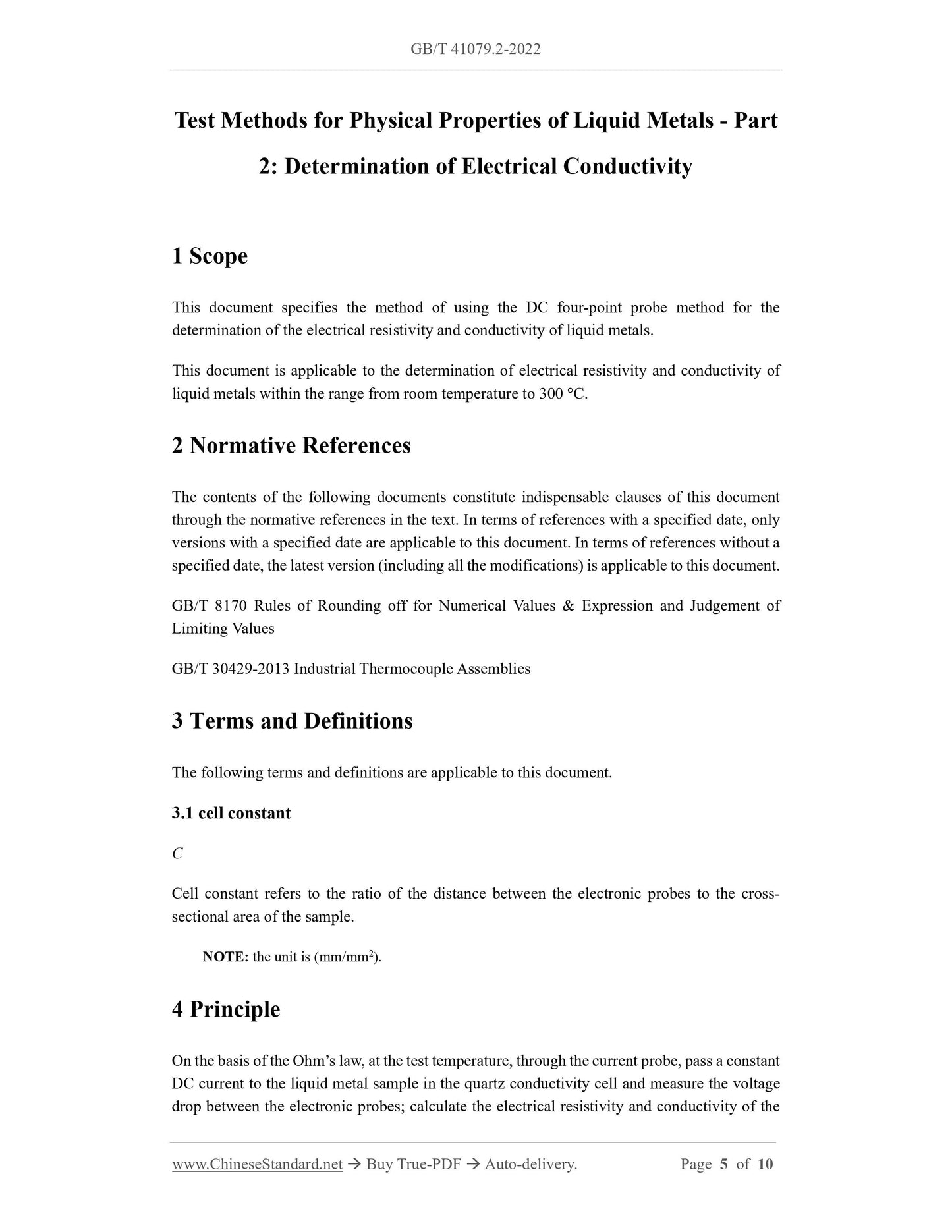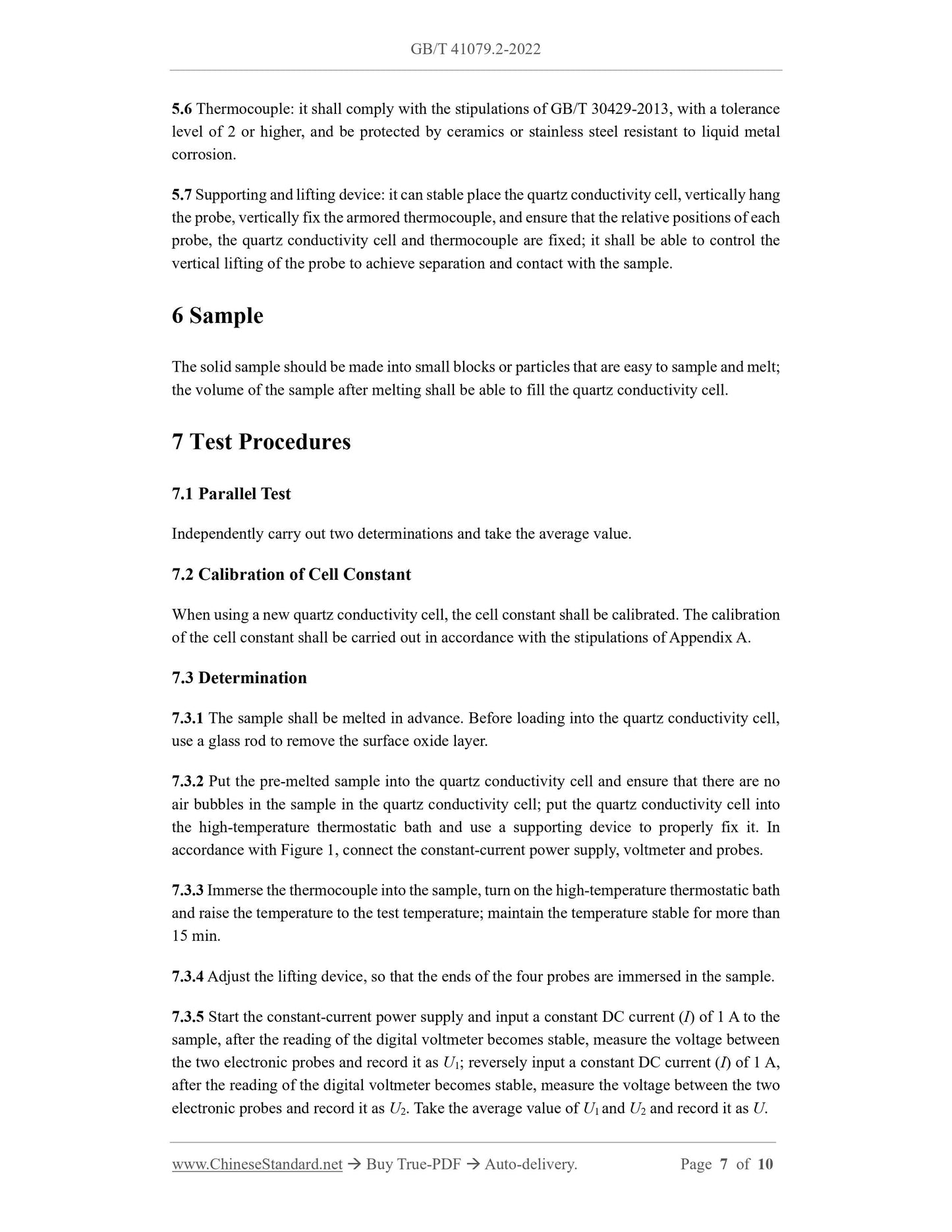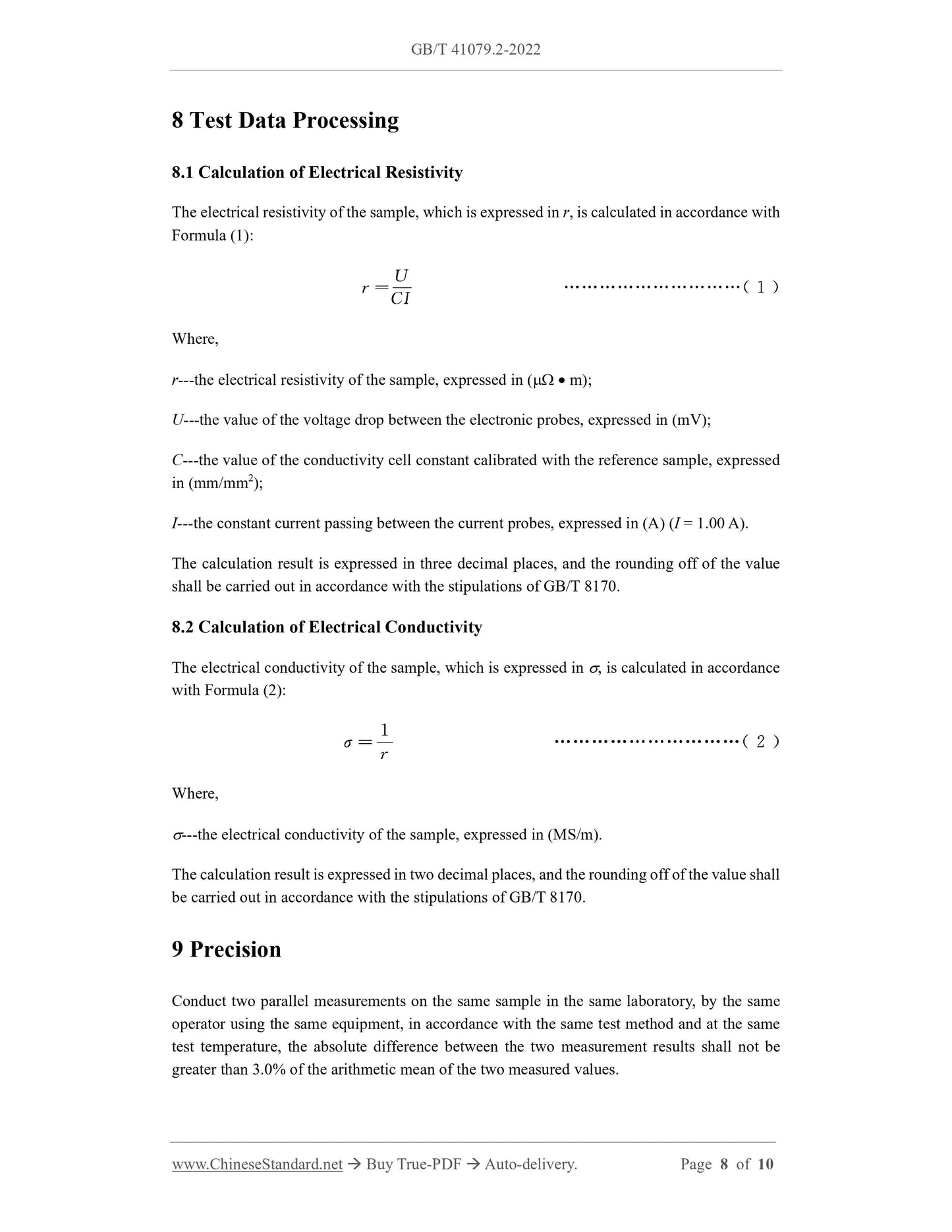1
/
of
5
www.ChineseStandard.us -- Field Test Asia Pte. Ltd.
GB/T 41079.2-2022 English PDF (GB/T41079.2-2022)
GB/T 41079.2-2022 English PDF (GB/T41079.2-2022)
Regular price
$125.00
Regular price
Sale price
$125.00
Unit price
/
per
Shipping calculated at checkout.
Couldn't load pickup availability
GB/T 41079.2-2022: Test methods for physical properties of liquid metals - Part 2: Determination of electrical conductivity
Delivery: 9 seconds. Download (and Email) true-PDF + Invoice.Get Quotation: Click GB/T 41079.2-2022 (Self-service in 1-minute)
Newer / historical versions: GB/T 41079.2-2022
Preview True-PDF
Scope
This document specifies the method of using the DC four-point probe method for thedetermination of the electrical resistivity and conductivity of liquid metals.
This document is applicable to the determination of electrical resistivity and conductivity of
liquid metals within the range from room temperature to 300 C.
Basic Data
| Standard ID | GB/T 41079.2-2022 (GB/T41079.2-2022) |
| Description (Translated English) | Test methods for physical properties of liquid metals - Part 2: Determination of electrical conductivity |
| Sector / Industry | National Standard (Recommended) |
| Classification of Chinese Standard | H21 |
| Word Count Estimation | 10,168 |
| Issuing agency(ies) | State Administration for Market Regulation, China National Standardization Administration |
Share
